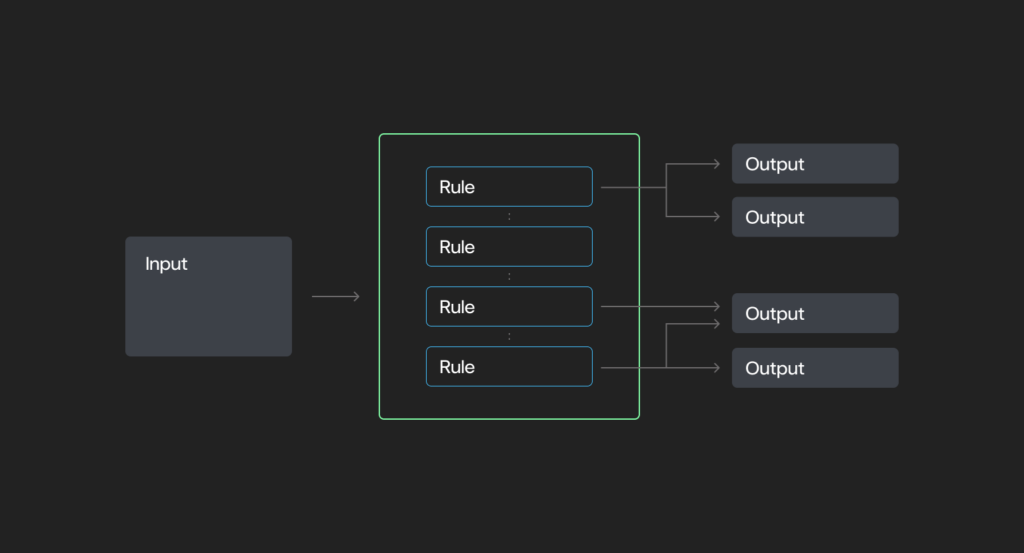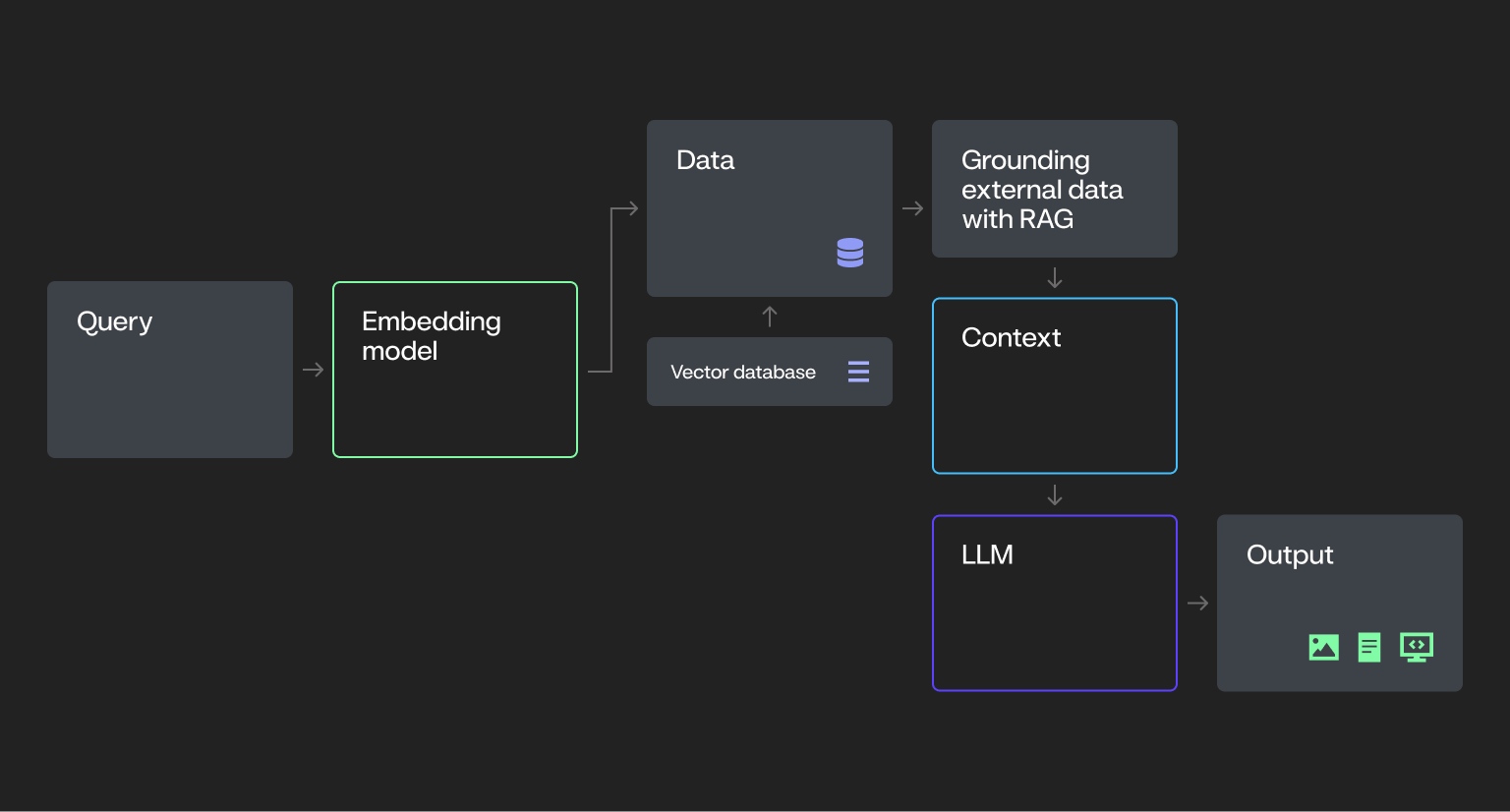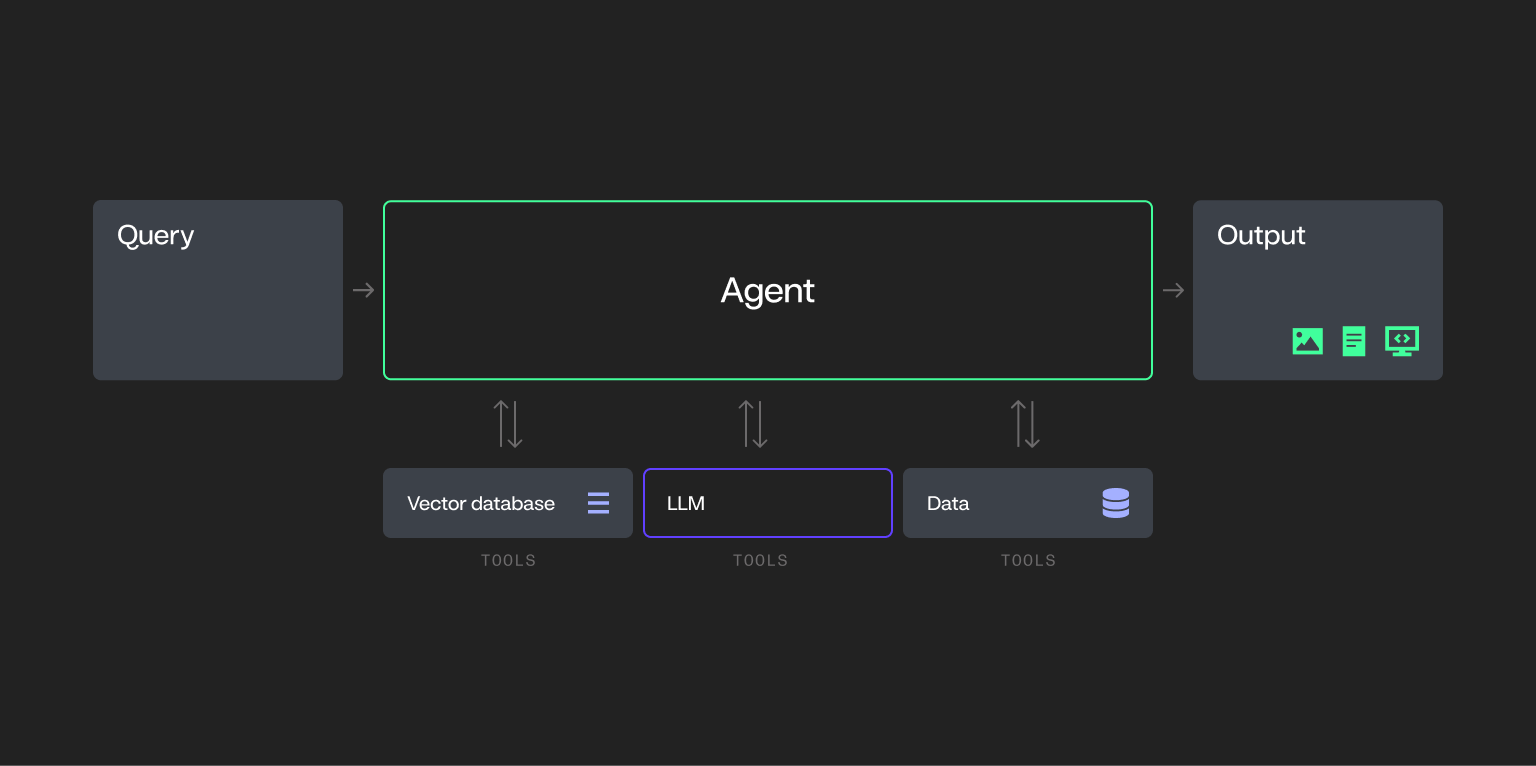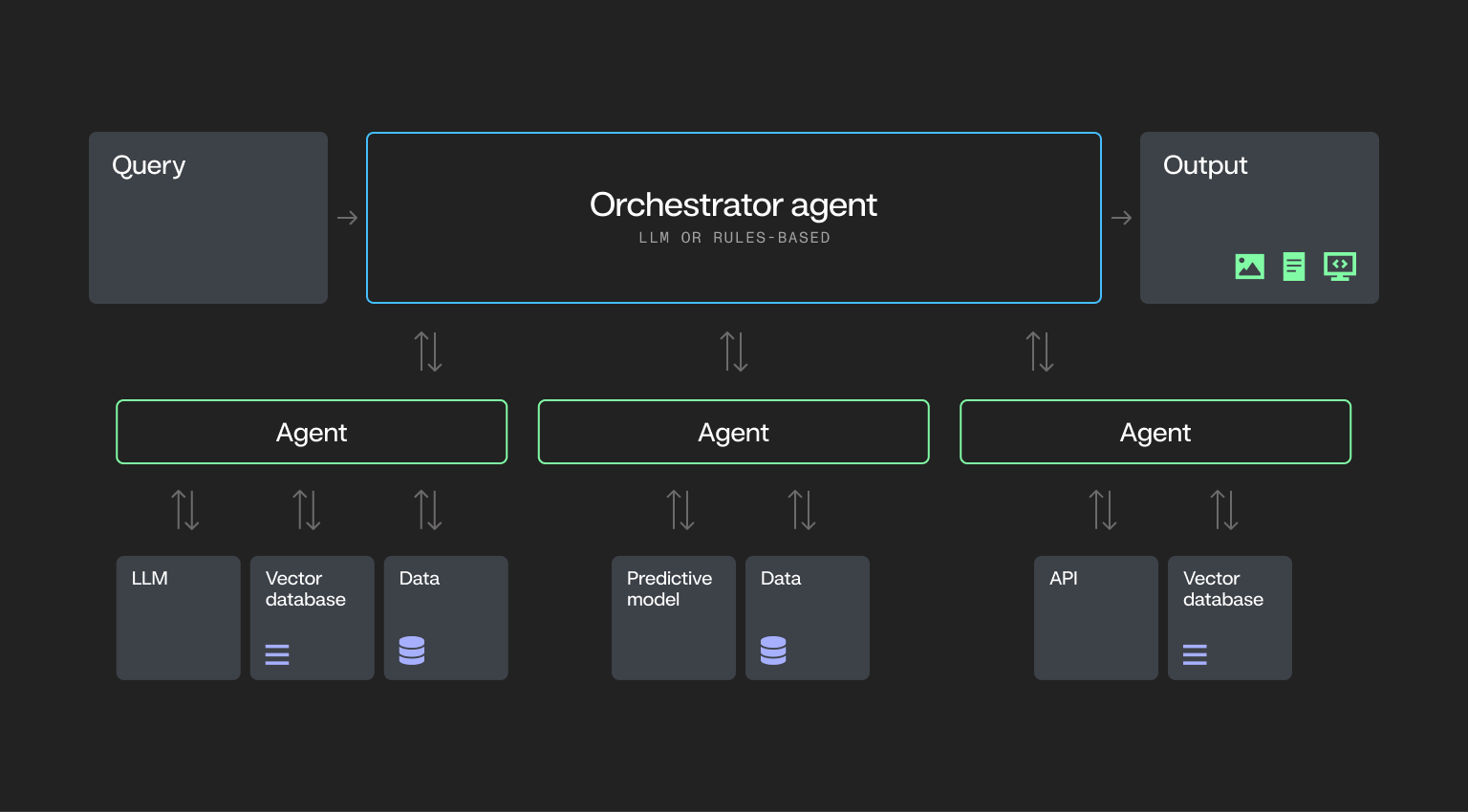TL;DR:
CIOs face mounting strain to undertake agentic AI — however skipping steps results in value overruns, compliance gaps, and complexity you may’t unwind. This submit outlines a wiser, staged path that can assist you scale AI with management, readability, and confidence.
AI leaders are beneath immense strain to implement options which can be each cost-effective and safe. The problem lies not solely in adopting AI but additionally in conserving tempo with developments that may really feel overwhelming.
This typically results in the temptation to dive headfirst into the most recent improvements to remain aggressive.
Nonetheless, leaping straight into advanced multi-agent methods with out a strong basis is akin to setting up the higher flooring of a constructing earlier than laying its base, leading to a construction that’s unstable and doubtlessly hazardous.
On this submit, we stroll by means of the way to information your group by means of every stage of agentic AI maturity — securely, effectively, and with out expensive missteps.
Understanding key AI ideas
Earlier than delving into the levels of AI maturity, it’s important to ascertain a transparent understanding of key ideas:
Deterministic methods
Deterministic methods are the foundational constructing blocks of automation.
- Comply with a hard and fast set of predefined guidelines the place the end result is absolutely predictable. Given the identical enter, the system will all the time produce the identical output.
- Doesn’t incorporate randomness or ambiguity.
- Whereas all deterministic methods are rule-based, not all rule-based methods are deterministic.
- Preferrred for duties requiring consistency, traceability, and management.
- Examples: Primary automation scripts, legacy enterprise software program, and scheduled information switch processes.
Rule-based methods
A broader class that features deterministic methods however may also introduce variability (e.g., stochastic habits).
- Function based mostly on a set of predefined circumstances and actions — “if X, then Y.”
- Might incorporate: deterministic methods or stochastic components, relying on design.
- Highly effective for imposing construction.
- Lack autonomy or reasoning capabilities.
- Examples: E-mail filters, Robotic Course of Automation (RPA) ) and complicated infrastructure protocols like web routing.

Course of AI
A step past rule-based methods.
- Powered by Massive Language Fashions (LLMs) and Imaginative and prescient-Language Fashions (VLMs)
- Educated on in depth datasets to generate various content material (e.g., textual content, photographs, code) in response to enter prompts.
- Responses are grounded in pre-trained information and may be enriched with exterior information by way of strategies like Retrieval-Augmented Technology (RAG).
- Doesn’t make autonomous choices — operates solely when prompted.
- Examples: Generative AI chatbots, summarization instruments, and content-generation functions powered by LLMs.

Single-agent methods
Introduce autonomy, planning, and power utilization, elevating foundational AI into extra advanced territory.
- AI-driven packages designed to carry out particular duties independently.
- Can combine with exterior instruments and methods (e.g., databases or APIs) to finish duties.
- Don’t collaborate with different brokers — function alone inside a activity framework.
- To not be confused with RPA: RPA is good for extremely standardized, rules-based duties the place logic doesn’t require reasoning or adaptation.
- Examples: AI-driven assistants for forecasting, monitoring, or automated activity execution that function independently.

Multi-agent methods
Probably the most superior stage, that includes distributed decision-making, autonomous coordination, and dynamic workflows.
- Comprised of a number of AI brokers that work together and collaborate to realize advanced aims.
- Brokers dynamically resolve which instruments to make use of, when, and in what sequence.
- Capabilities embrace planning, reflection, reminiscence utilization, and cross-agent collaboration.
- Examples: Distributed AI methods coordinating throughout departments like provide chain, customer support, or fraud detection.

What makes an AI system really agentic?
To be thought of really agentic, an AI system sometimes demonstrates core capabilities that allow it to function with autonomy and flexibility:
- Planning. The system can break down a activity into steps and create a plan of execution.
- Device calling. The AI selects and makes use of instruments (e.g., fashions, features) and initiates API calls to work together with exterior methods to finish duties.
- Adaptability. The system can alter its actions in response to altering inputs or environments, making certain efficient efficiency throughout various contexts.
- Reminiscence. The system retains related data throughout steps or classes.
These traits align with broadly accepted definitions of agentic AI, together with frameworks mentioned by AI leaders comparable to Andrew Ng.
With these definitions in thoughts, let’s discover the levels required to progress towards implementing multi-agent methods.
Understanding agentic AI maturity levels
For the needs of simplicity, we’ve delineated the trail to extra advanced agentic flows into three levels. Every stage presents distinctive challenges and alternatives regarding value, safety, and governance.
Stage 1: Course of AI
What this stage appears to be like like
Within the Course of AI stage, organizations sometimes pilot generative AI by means of remoted use circumstances like chatbots, doc summarization, or inside Q&A. These efforts are sometimes led by innovation groups or particular person enterprise items, with restricted involvement from IT.
Deployments are constructed round a single LLM and function exterior core methods like ERP or CRM, making integration and oversight troublesome.
Infrastructure is usually pieced collectively, governance is casual, and safety measures could also be inconsistent.
Provide chain instance for course of AI
Within the Course of AI stage, a provide chain workforce would possibly use a generative AI-powered chatbot to summarize cargo information or reply fundamental vendor queries based mostly on inside paperwork. This software can pull in information by means of a RAG workflow to supply insights, but it surely doesn’t take any motion autonomously.
For instance, the chatbot might summarize stock ranges, predict demand based mostly on historic traits, and generate a report for the workforce to overview. Nonetheless, the workforce should then resolve what motion to take (e.g., place restock orders or alter provide ranges).
The system merely gives insights — it doesn’t make choices or take actions.
Frequent obstacles
Whereas early AI initiatives can present promise, they typically create operational blind spots that stall progress, drive up prices, and enhance threat if left unaddressed.
- Knowledge integration and high quality. Most organizations wrestle to unify information throughout disconnected methods, limiting the reliability and relevance of generative AI output.
- Scalability challenges. Pilot initiatives typically stall when groups lack the infrastructure, entry, or technique to maneuver from proof of idea to manufacturing.
- Insufficient testing and stakeholder alignment. Generative outputs are incessantly launched with out rigorous QA or enterprise consumer acceptance, resulting in belief and adoption points.
- Change administration friction. As generative AI reshapes roles and workflows, poor communication and planning can create organizational resistance.
- Lack of visibility and traceability. With out mannequin monitoring or auditability, it’s obscure how choices are made or pinpoint the place errors happen.
- Bias and equity dangers. Generative fashions can reinforce or amplify bias in coaching information, creating reputational, moral, or compliance dangers.
- Moral and accountability gaps. AI-generated content material can blur moral strains or be misused, elevating questions round duty and management.
- Regulatory complexity. Evolving world and industry-specific rules make it troublesome to make sure ongoing compliance at scale.
Device and infrastructure necessities
Earlier than advancing to extra autonomous methods, organizations should guarantee their infrastructure is provided to help safe, scalable, and cost-effective AI deployment.
- Quick, versatile vector database updates to handle embeddings as new information turns into obtainable.
- Scalable information storage to help giant datasets used for coaching, enrichment, and experimentation.
- Enough compute assets (CPUs/GPUs) to energy coaching, tuning, and working fashions at scale.
- Safety frameworks with enterprise-grade entry controls, encryption, and monitoring to guard delicate information.
- Multi-model flexibility to check and consider totally different LLMs and decide the perfect match for particular use circumstances.
- Benchmarking instruments to visualise and examine mannequin efficiency throughout assessments and testing.
- Lifelike, domain-specific information to check responses, simulate edge circumstances, and validate outputs.
- A QA prototyping surroundings that helps fast setup, consumer acceptance testing, and iterative suggestions.
- Embedded safety, AI, and enterprise logic for consistency, guardrails, and alignment with organizational requirements.
- Actual-time intervention and moderation instruments for IT and safety groups to observe and management AI outputs in actual time.
- Sturdy information integration capabilities to attach sources throughout the group and guarantee high-quality inputs.
- Elastic infrastructure to scale with demand with out compromising efficiency or availability.
- Compliance and audit tooling that allows documentation, change monitoring, and regulatory adherence.
Making ready for the following stage
To construct on early generative AI efforts and put together for extra autonomous methods, organizations should lay a strong operational and organizational basis.
- Spend money on AI-ready information. It doesn’t should be good, but it surely have to be accessible, structured, and safe to help future workflows.
- Use vector database visualizations. This helps groups establish information gaps and validate the relevance of generative responses.
- Apply business-driven QA/UAT. Prioritize acceptance testing with the tip customers who will depend on generative output, not simply technical groups.
- Rise up a safe AI registry. Observe mannequin variations, prompts, outputs, and utilization throughout the group to allow traceability and auditing.
- Implement baseline governance. Set up foundational frameworks like role-based entry management (RBAC), approval flows, and information lineage monitoring.
- Create repeatable workflows. Standardize the AI improvement course of to maneuver past one-off experimentation and allow scalable output.
- Construct traceability into generative AI utilization. Guarantee transparency round information sources, immediate building, output high quality, and consumer exercise.
- Mitigate bias early. Use various, consultant datasets and usually audit mannequin outputs to establish and handle equity dangers.
- Collect structured suggestions. Set up suggestions loops with finish customers to catch high quality points, information enhancements, and refine use circumstances.
- Encourage cross-functional oversight. Contain authorized, compliance, information science, and enterprise stakeholders to information technique and guarantee alignment.
Key takeaways
Course of AI is the place most organizations start — but it surely’s additionally the place many get caught. With out robust information foundations, clear governance, and scalable workflows, early experiments can introduce extra threat than worth.
To maneuver ahead, CIOs must shift from exploratory use circumstances to enterprise-ready methods — with the infrastructure, oversight, and cross-functional alignment required to help protected, safe, and cost-effective AI adoption at scale.
Stage 2: Single-agent methods
What this stage appears to be like like
At this stage, organizations start tapping into true agentic AI — deploying single-agent methods that may act independently to finish duties. These brokers are able to planning, reasoning, and calling instruments like APIs or databases to get work achieved with out human involvement.
Not like earlier generative methods that look ahead to prompts, single-agent methods can resolve when and the way to act inside an outlined scope.
This marks a transparent step into autonomous operations—and a crucial inflection level in a company’s AI maturity.
Provide chain instance for single-agent methods
Let’s revisit the provision chain instance. With a single-agent system in place, the workforce can now autonomously handle stock. The system displays real-time inventory ranges throughout regional warehouses, forecasts demand utilizing historic traits, and locations restock orders robotically by way of an built-in procurement API—with out human enter.
Not like the method AI stage, the place a chatbot solely summarizes information or solutions queries based mostly on prompts, the single-agent system acts autonomously. It makes choices, adjusts stock, and locations orders inside a predefined workflow.
Nonetheless, as a result of the agent is making unbiased choices, any errors in configuration or missed edge circumstances (e.g., surprising demand spikes) might lead to points like stockouts, overordering, or pointless prices.
It is a crucial shift. It’s not nearly offering data anymore; it’s concerning the system making choices and executing actions, making governance, monitoring, and guardrails extra essential than ever.
Frequent obstacles
As single-agent methods unlock extra superior automation, many organizations run into sensible roadblocks that make scaling troublesome.
- Legacy integration challenges. Many single-agent methods wrestle to attach with outdated architectures and information codecs, making integration technically advanced and resource-intensive.
- Latency and efficiency points. As brokers carry out extra advanced duties, delays in processing or software calls can degrade consumer expertise and system reliability.
- Evolving compliance necessities. Rising rules and moral requirements introduce uncertainty. With out strong governance frameworks, staying compliant turns into a shifting goal.
- Compute and expertise calls for. Working agentic methods requires important infrastructure and specialised abilities, placing strain on budgets and headcount planning.
- Device fragmentation and vendor lock-in. The nascent agentic AI panorama makes it arduous to decide on the appropriate tooling. Committing to a single vendor too early can restrict flexibility and drive up long-term prices.
- Traceability and power name visibility. Many organizations lack the mandatory stage of observability and granular intervention required for these methods. With out detailed traceability and the power to intervene at a granular stage, methods can simply run amok, resulting in unpredictable outcomes and elevated threat.
Device and infrastructure necessities
At this stage, your infrastructure must do extra than simply help experimentation—it must maintain brokers related, working easily, and working securely at scale.
- Integration platform with instruments that facilitate seamless connectivity between the AI agent and your core enterprise methods, making certain clean information circulate throughout environments.
- Monitoring methods designed to trace and analyze the agent’s efficiency and outcomes, flag points, and floor insights for ongoing enchancment.
- Compliance administration instruments that assist implement AI insurance policies and adapt shortly to evolving regulatory necessities.
- Scalable, dependable storage to deal with the rising quantity of knowledge generated and exchanged by AI brokers.
- Constant compute entry to maintain brokers performing effectively beneath fluctuating workloads.
- Layered safety controls that shield information, handle entry, and keep belief as brokers function throughout methods.
- Dynamic intervention and moderation that may perceive processes aren’t adhering to insurance policies, intervene in real-time and ship alerts for human intervention.
Making ready for the following stage
Earlier than layering on further brokers, organizations must take inventory of what’s working, the place the gaps are, and the way to strengthen coordination, visibility, and management at scale.
- Consider present brokers. Establish efficiency limitations, system dependencies, and alternatives to enhance or increase automation.
- Construct coordination frameworks. Set up methods that can help seamless interplay and task-sharing between future brokers.
- Strengthen observability. Implement monitoring instruments that present real-time insights into agent habits, outputs, and failures on the software stage and the agent stage.
- Interact cross-functional groups. Align AI targets and threat administration methods throughout IT, authorized, compliance, and enterprise items.
- Embed automated coverage enforcement. Construct in mechanisms that uphold safety requirements and help regulatory compliance as agent methods increase.
Key takeaways
Single-agent methods provide important functionality by enabling autonomous actions that improve operational effectivity. Nonetheless, they typically include increased prices in comparison with non-agentic RAG workflows, like these within the course of AI stage, in addition to elevated latency and variability in response occasions.
Since these brokers make choices and take actions on their very own, they require tight integration, cautious governance, and full traceability.
If foundational controls like observability, governance, safety, and auditability aren’t firmly established within the course of AI stage, these gaps will solely widen, exposing the group to larger dangers round value, compliance, and model fame.
Stage 3: Multi-agent methods
What this stage appears to be like like
On this stage, a number of AI brokers work collectively — every with its personal activity, instruments, and logic — to realize shared targets with minimal human involvement. These brokers function autonomously, however in addition they coordinate, share data, and alter their actions based mostly on what others are doing.
Not like single-agent methods, choices aren’t made in isolation. Every agent acts based mostly by itself observations and context, contributing to a system that behaves extra like a workforce, planning, delegating, and adapting in actual time.
This type of distributed intelligence unlocks highly effective use circumstances and large scale. However as one can think about, it additionally introduces important operational complexity: overlapping choices, system interdependencies, and the potential for cascading failures if brokers fall out of sync.
Getting this proper calls for robust structure, real-time observability, and tight controls.
Provide chain instance for multi-agent methods
In earlier levels, a chatbot was used to summarize shipments and a single-agent system was deployed to automate stock restocking.
On this instance, a community of AI brokers are deployed, every specializing in a unique a part of the operation, from forecasting and video evaluation to scheduling and logistics.
When an surprising cargo quantity is forecasted, brokers kick into motion:
- A forecasting agent initiatives capability wants.
- A pc imaginative and prescient agent analyzes reside warehouse footage to seek out underutilized house.
- A delay prediction agent faucets time sequence information to anticipate late arrivals.
These brokers talk and coordinate in actual time, adjusting workflows, updating the warehouse supervisor, and even triggering downstream adjustments like rescheduling vendor pickups.
This stage of autonomy unlocks pace and scale that handbook processes can’t match. However it additionally means one defective agent — or a breakdown in communication — can ripple throughout the system.
At this stage, visibility, traceability, intervention, and guardrails change into non-negotiable.
Frequent obstacles
The shift to multi-agent methods isn’t only a step up in functionality — it’s a leap in complexity. Every new agent added to the system introduces new variables, new interdependencies, and new methods for issues to interrupt in case your foundations aren’t strong.
- Escalating infrastructure and operational prices. Working multi-agent methods is dear—particularly as every agent drives further API calls, orchestration layers, and real-time compute calls for. Prices compound shortly throughout a number of fronts:
- Specialised tooling and licenses. Constructing and managing agentic workflows typically requires area of interest instruments or frameworks, rising prices and limiting flexibility.
- Useful resource-intensive compute. Multi-agent methods demand high-performance {hardware}, like GPUs, which can be expensive to scale and troublesome to handle effectively.
- Scaling the workforce. Multi-agent methods require area of interest experience throughout AI, MLOps, and infrastructure — typically including headcount and rising payroll prices in an already aggressive expertise market.
- Operational overhead. Even autonomous methods want hands-on help. Standing up and sustaining multi-agent workflows typically requires important handbook effort from IT and infrastructure groups, particularly throughout deployment, integration, and ongoing monitoring.
- Deployment sprawl. Managing brokers throughout cloud, edge, desktop, and cell environments introduces considerably extra complexity than predictive AI, which usually depends on a single endpoint. As compared, multi-agent methods typically require 5x the coordination, infrastructure, and help to deploy and keep.
- Misaligned brokers. With out robust coordination, brokers can take conflicting actions, duplicate work, or pursue targets out of sync with enterprise priorities.
- Safety floor enlargement. Every further agent introduces a brand new potential vulnerability, making it more durable to guard methods and information end-to-end.
- Vendor and tooling lock-in. Rising ecosystems can result in heavy dependence on a single supplier, making future adjustments expensive and disruptive.
- Cloud constraints. When multi-agent workloads are tied to a single supplier, organizations threat working into compute throttling, burst limits, or regional capability points—particularly as demand turns into much less predictable and more durable to manage.
- Autonomy with out oversight. Brokers might exploit loopholes or behave unpredictably if not tightly ruled, creating dangers which can be arduous to include in actual time.
- Dynamic useful resource allocation. Multi-agent workflows typically require infrastructure that may reallocate compute (e.g., GPUs, CPUs) in actual time—including new layers of complexity and value to useful resource administration.
- Mannequin orchestration complexity. Coordinating brokers that depend on various fashions or reasoning methods introduces integration overhead and will increase the chance of failure throughout workflows.
- Fragmented observability. Tracing choices, debugging failures, or figuring out bottlenecks turns into exponentially more durable as agent depend and autonomy develop.
- No clear “achieved.” With out robust activity verification and output validation, brokers can drift off-course, fail silently, or burn pointless compute.
Device and infrastructure necessities
As soon as brokers begin making choices and coordinating with one another, your methods must do extra than simply sustain — they should keep in management. These are the core capabilities to have in place earlier than scaling multi-agent workflows in manufacturing.
- Elastic compute assets. Scalable entry to GPUs, CPUs, and high-performance infrastructure that may be dynamically reallocated to help intensive agentic workloads in actual time.
- Multi-LLM entry and routing. Flexibility to check, examine, and route duties throughout totally different LLMs to manage prices and optimize efficiency by use case.
- Autonomous system safeguards. Constructed-in safety frameworks that stop misuse, shield information integrity, and implement compliance throughout distributed agent actions.
- Agent orchestration layer. Workflow orchestration instruments that coordinate activity delegation, software utilization, and communication between brokers at scale.
- Interoperable platform structure. Open methods that help integration with various instruments and applied sciences, serving to you keep away from lock-in and enabling long-term flexibility.
- Finish-to-end dynamic observability and intervention. Monitoring, moderation, and traceability instruments that not solely floor agent habits, detect anomalies, and help real-time intervention, but additionally adapt as brokers evolve. These instruments can establish when brokers try to take advantage of loopholes or create new ones, triggering alerts or halting processes to re-engage human oversight
Making ready for the following stage
There’s no playbook for what comes after multi-agent methods, however organizations that put together now would be the ones shaping what comes subsequent. Constructing a versatile, resilient basis is the easiest way to remain forward of fast-moving capabilities, shifting rules, and evolving dangers.
- Allow dynamic useful resource allocation. Infrastructure ought to help real-time reallocation of GPUs, CPUs, and compute capability as agent workflows evolve.
- Implement granular observability. Use superior monitoring and alerting instruments to detect anomalies and hint agent habits on the most detailed stage.
- Prioritize interoperability and suppleness. Select instruments and platforms that combine simply with different methods and help hot-swapping parts and streamlined CI/CD workflows so that you’re not locked into one vendor or tech stack.
- Construct multi-cloud fluency. Guarantee your groups can work throughout cloud platforms to distribute workloads effectively, scale back bottlenecks, keep away from provider-specific limitations, and help long-term flexibility.
- Centralize AI asset administration. Use a unified registry to manipulate entry, deployment, and versioning of all AI instruments and brokers.
- Evolve safety along with your brokers. Implement adaptive, context-aware safety protocols that reply to rising threats in actual time.
- Prioritize traceability. Guarantee all agent choices are logged, explainable, and auditable to help investigation and steady enchancment.
- Keep present with instruments and techniques. Construct methods and workflows that may constantly take a look at and combine new fashions, prompts, and information sources.
Key takeaways
Multi-agent methods promise scale, however with out the appropriate basis, they’ll amplify your issues, not remedy them.
As brokers multiply and choices change into extra distributed, even small gaps in governance, integration, or safety can cascade into expensive failures.
AI leaders who succeed at this stage gained’t be those chasing the flashiest demos—they’ll be those who deliberate for complexity earlier than it arrived.
Advancing to agentic AI with out shedding management
AI maturity doesn’t occur unexpectedly. Every stage — from early experiments to multi-agent methods— brings new worth, but additionally new complexity. The important thing isn’t to hurry ahead. It’s to maneuver with intention, constructing on robust foundations at each step.
For AI leaders, this implies scaling AI in methods which can be cost-effective, well-governed, and resilient to vary.
You don’t must do all the things proper now, however the choices you make now form how far you’ll go.
Need to evolve by means of your AI maturity safely and effectively? Request a demo to see how our Agentic AI Apps Platform ensures safe, cost-effective progress at every stage.
Concerning the creator

Lisa Aguilar is VP of Product Advertising and Discipline CTOs at DataRobot, the place she is accountable for constructing and executing the go-to-market technique for his or her AI-driven forecasting product line. As a part of her function, she companions intently with the product administration and improvement groups to establish key options that may handle the wants of outlets, producers, and monetary service suppliers with AI. Previous to DataRobot, Lisa was at ThoughtSpot, the chief in Search and AI-Pushed Analytics.

Dr. Ramyanshu (Romi) Datta is the Vice President of Product for AI Platform at DataRobot, accountable for capabilities that allow orchestration and lifecycle administration of AI Brokers and Functions. Beforehand he was at AWS, main product administration for AWS’ AI Platforms – Amazon Bedrock Core Programs and Generative AI on Amazon SageMaker. He was additionally GM for AWS’s Human-in-the-Loop AI providers. Previous to AWS, Dr. Datta has additionally held engineering and product roles at IBM and Nvidia. He obtained his M.S. and Ph.D. levels in Laptop Engineering from the College of Texas at Austin, and his MBA from College of Chicago Sales space College of Enterprise. He’s a co-inventor of 25+ patents on topics starting from Synthetic Intelligence, Cloud Computing & Storage to Excessive-Efficiency Semiconductor Design and Testing.

Dr. Debadeepta Dey is a Distinguished Researcher at DataRobot, the place he leads dual-purpose strategic analysis initiatives. These initiatives concentrate on advancing the elemental state-of-the-art in Deep Studying and Generative AI, whereas additionally fixing pervasive issues confronted by DataRobot’s clients, with the purpose of enabling them to derive worth from AI. He accomplished his PhD in AI and Robotics from The Robotics Institute, Carnegie Mellon College in 2015. From 2015 to 2024, he was a researcher at Microsoft Analysis. His main analysis pursuits embrace Reinforcement Studying, AutoML, Neural Structure Search, and high-dimensional planning. He usually serves as Space Chair at ICML, NeurIPS, and ICLR, and has revealed over 30 papers in top-tier AI and Robotics journals and conferences. His work has been acknowledged with a Finest Paper of the Yr Shortlist nomination on the Worldwide Journal of Robotics Analysis.


